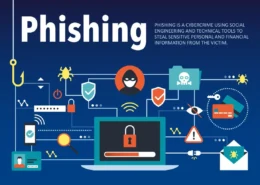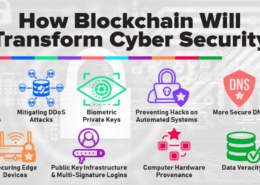RED FLAGS TO LOOK IN A POTENTIAL PHISHING ATTEMPT EMAIL- This question highlights a really important fraud attempt prevalent in today's digital landscape and regarding which awareness calls for its peak. These are two additional red flags to be vigilant for in an email that can be a potential phishiRead more
RED FLAGS TO LOOK IN A POTENTIAL PHISHING ATTEMPT EMAIL-
This question highlights a really important fraud attempt prevalent in today’s digital landscape and regarding which awareness calls for its peak.
These are two additional red flags to be vigilant for in an email that can be a potential phishing attempt.
- Suspicious Sender Address:
- Unfamiliar Sender: If the email comes from an unknown sender or an address that doesn’t match the supposed organisation’s domain, be cautious. For instance, an email claiming to be from your bank but coming from a generic or unrelated domain (e.g.,
[email protected]instead of[email protected]) is suspicious. - Subtle Misspellings: Cybercriminals often create email addresses that look similar to legitimate ones by using slight misspellings or additional characters (e.g.,
[email protected]instead of[email protected]).
2. Generic Greetings and Lack of Personalisation:
-
Generic Salutations: Phishing emails often use generic greetings like “Dear Customer” or “Dear User” instead of addressing you by name. Legitimate organisations typically use your name and other personal details they have on file.
-
Lack of Specific Information: If the email lacks specific details that a legitimate sender would include (such as account numbers, last transaction details, etc.), it might be a phishing attempt.





Advancements in AI and quantum computing are set to profoundly impact cybersecurity over the next decade. AI technologies offer enhanced capabilities in threat detection and response, leveraging machine learning algorithms to analyze vast datasets and detect anomalies indicative of cyber threats morRead more
Advancements in AI and quantum computing are set to profoundly impact cybersecurity over the next decade. AI technologies offer enhanced capabilities in threat detection and response, leveraging machine learning algorithms to analyze vast datasets and detect anomalies indicative of cyber threats more effectively than traditional methods. Automated response mechanisms powered by AI can also improve incident response times, mitigating potential damage from cyberattacks. However, the rise of AI-driven attacks poses a dual challenge, necessitating ongoing innovation in defensive AI systems to counter sophisticated adversarial tactics.
On the other hand, quantum computing represents a paradigm shift in cryptographic security. While traditional cryptographic methods rely on the difficulty of mathematical problems like factoring large numbers, quantum computers have the potential to break these algorithms through algorithms like Shor’s algorithm. This capability threatens to undermine current encryption standards, prompting the development of post-quantum cryptography (PQC) that can resist quantum attacks. Additionally, quantum technologies may enhance cybersecurity through developments like quantum key distribution (QKD), offering fundamentally secure methods for encrypting communications.
Looking forward, the convergence of AI and quantum computing presents opportunities to bolster cybersecurity through more robust defenses and secure communication protocols. However, it also demands proactive measures to anticipate and address new vulnerabilities that these technologies may introduce. Collaboration between researchers, industry stakeholders, and policymakers will be essential in navigating this complex landscape to ensure a secure digital future.
See less